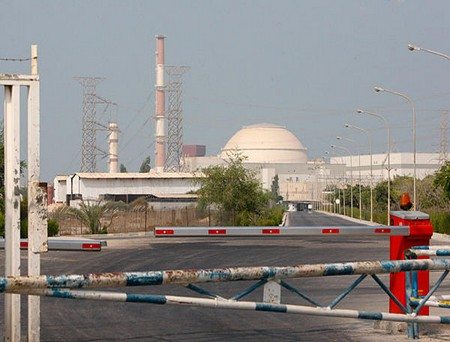Global powers were due to gather with Iran Monday, seeking to slot into place the last pieces of a complex puzzle to curtail Tehran’s nuclear programme as diplomats said tentative agreement on some parts had been reached.
US Secretary of State John Kerry will lead the team of six world powers — who hope an end to more than a decade of nuclear tensions with Iran may be in sight — for their first full plenary session of the latest round of talks.
While diplomats said some key points appeared to have been resolved to ensure Iran cannot make a covert dash for a nuclear bomb, they cautioned that the outlines of a political understanding were not yet fully agreed.
“We are here because we believe a deal can be done,” Hammond told reporters in Lausanne late Sunday as he became the last of the P5+1 group of foreign ministers to arrive in the Swiss town for the talks.
“But it has to be a deal which puts the bomb beyond Iran’s reach,” he said, adding he hoped for success before Tuesday’s midnight deadline.
“There can’t be any compromise about that,” Hammond insisted, before meeting with his Chinese, French, German, Russian and US counterparts, as well as EU foreign policy chief Federica Mogherini.
As negotiators in Switzerland raced against the clock, Israeli Prime Minister Benjamin Netanyahu launched a blistering attack on the “dangerous” deal.
Guarded optimism
One Western diplomat said Iran had “more or less” agreed to slash the number of its sophisticated centrifuges from 20,000 to 6,000 and to ship abroad most of its stockpile of nuclear material.
But Iran’s chief negotiator Abbas Araqchi insisted: “There is no question of sending the stocks abroad.”
Iranians have expressed guarded optimism that after 18 months of tortuous negotiations and two missed deadlines, a breakthrough may be at hand.
“Getting to an accord is doable. Solutions have been found for numerous questions. We are still working on two or three issues… The talks are in their final phase and are very difficult,” Araqchi said.
The aim is to agree broad outlines for an accord by midnight on Tuesday and then flesh out a series of complex annexes containing all the technical details by June 30.
The mooted deal would see Iran scale down its nuclear programme and allow unprecedented inspections of its remaining activities.
Its underground facility at Fordo would also likely be barred from uranium enrichment, diplomats said.
One of the thorniest issues is the lifting of UN, EU and US sanctions that have choked Iran’s economy by strangling its oil exports and banks.
Araqchi said Sunday there must be a “precise framework” for lifting sanctions. The duration of any deal — the US wants at least 10 and possibly up to 15 years — is also a point of contention.
“There are six (UN Security Council) resolutions that have to be annulled,” Araqchi said.
But a senior US official said all sides had agreed to a phased, step-by-step approach, although the exact formula had yet to be found.
‘Dangerous axis’
For Israel and US President Barack Obama’s Republican foes however, the agreement will not go far enough to stop Iran one day getting the bomb.
“The dangerous accord which is being negotiated in Lausanne confirms our concerns and even worse,” Netanyahu said in remarks broadcast on public radio.
The “Iran-Lausanne-Yemen axis” was “dangerous for all of humanity”, he said.
Republicans are also getting ready to pounce, planning new sanctions against Iran.
“I just don’t understand why we would sign an agreement with a group of people who in my opinion have no intention of keeping their word,” US House Speaker John Boehner told CNN.










